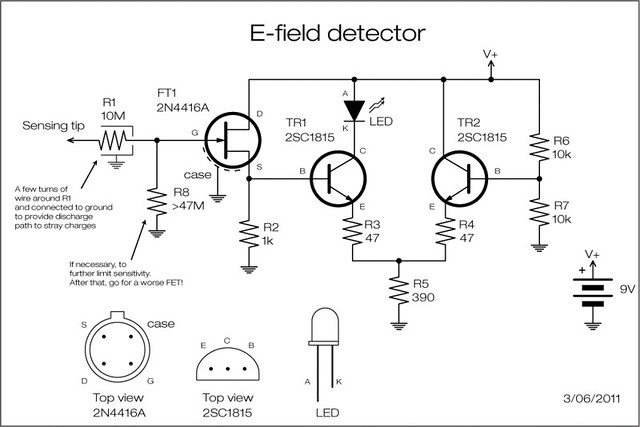High Voltage Detector
Really interesting notes & circtuits about how to fell high voltages.
This circuit is a simple electric field detector. It can can detect very faint electric fields present around powered electric lines. […]

Nothing really new: a JFET is used to sense the electric field generated by high voltage electric line; the JFET amplifies the signal very little, but it lowers the impedence and provide current to a level suitable for transistor amplification. The two transistor can be any low power NPN scavenged from anywhere. The two-transistor are configured as a sort of thresholded amplifier: when the voltage at R2 rises at above 3V circa, Q1 starts pumping current into the LED with a step curve providing a better go-no/go rensponse. The circuit is the same as the one used in the Korg Monotron to drive the LFO LED.
A low current LED could have been connected directly between V+ and the Drain of the JFET and removing TR1, TR2 and R3 through R7: in this case the LED would light up in a linear way, no threshold. See bottom of post for a description of what TR2 is there for.
Stray charge may escape from the tip of R1 for tip-effect letting the intrinsic capacitance at the gate of the JFET charge positively giving a positive read after a little while. So, a curled tip and a very high resistance path to ground in the form of a few turns of thin wire around resistor R1, help keep things in balance. In case, a very very high resistor can be connected between gate and ground (R8), but this will limit sensitivity very much.
Resistor R1 is there to provide a protection to the delicate gate of the JFET and the delicate heart of the operator in case of contact to a live line. Here, the higher the value of the resistor, the better. R1 also provides for the sensing tip.
via [5Volt.eu]